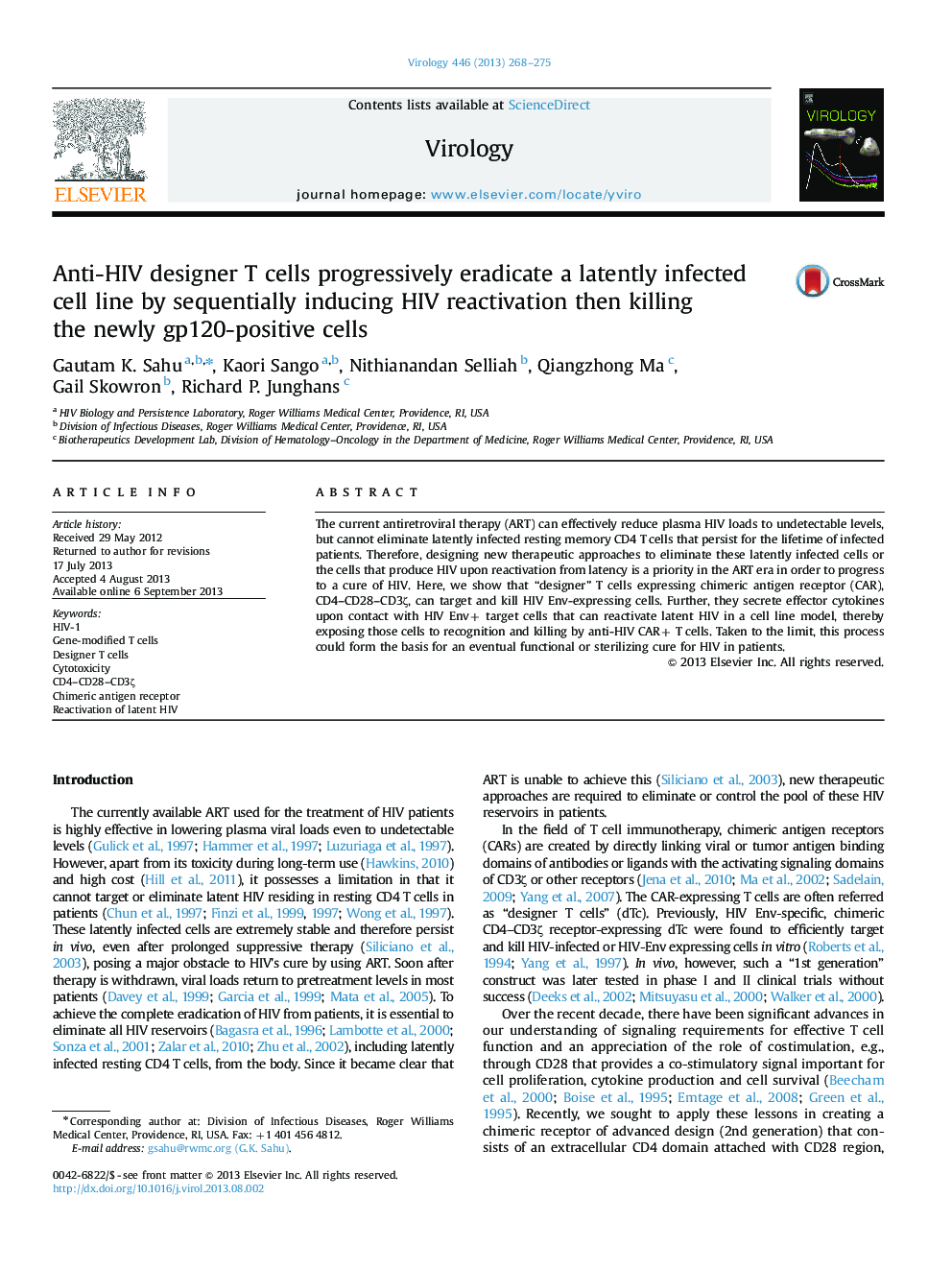| کد مقاله | کد نشریه | سال انتشار | مقاله انگلیسی | نسخه تمام متن |
|---|---|---|---|---|
| 6140676 | 1594257 | 2013 | 8 صفحه PDF | دانلود رایگان |

- The anti-HIV activities of CD4 CAR+ designer T cells (dTc) are tested in vitro.
- Killing of HIV-infected cells by CD4 CAR+ T cells requires CAR/HIV-Env interaction.
- Target cell lysis by CD4 CAR+ T cells was partly perforin-mediated.
- dTc could reactivate and then eradicate latently infected cells in the ACH-2 model.
The current antiretroviral therapy (ART) can effectively reduce plasma HIV loads to undetectable levels, but cannot eliminate latently infected resting memory CD4 T cells that persist for the lifetime of infected patients. Therefore, designing new therapeutic approaches to eliminate these latently infected cells or the cells that produce HIV upon reactivation from latency is a priority in the ART era in order to progress to a cure of HIV. Here, we show that “designer” T cells expressing chimeric antigen receptor (CAR), CD4-CD28-CD3ζ, can target and kill HIV Env-expressing cells. Further, they secrete effector cytokines upon contact with HIV Env+ target cells that can reactivate latent HIV in a cell line model, thereby exposing those cells to recognition and killing by anti-HIV CAR+ T cells. Taken to the limit, this process could form the basis for an eventual functional or sterilizing cure for HIV in patients.
Journal: Virology - Volume 446, Issues 1â2, November 2013, Pages 268-275